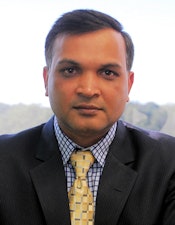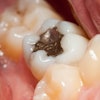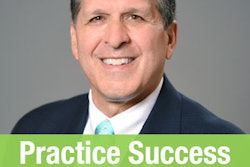
It's an all-too-common occurrence. Your practice has submitted sizable claims, only to have the payor fully or partially reject them because your provider isn't credentialed. Perhaps an application wasn't completed or a renewal date was missed. Whatever the reason, your practice is looking at more lost revenue. Clearly, all the forms, rules, and expiration dates have become too much to manage for your existing employees. Is it time to hire more staff?
Hold that thought. Advancements in automated communication between payors and providers are making provider data management infinitely easier, significantly reducing administrative burdens and risk to the dental practice's revenue. No longer do dental organizations have to depend on specialized staff knowledge to oversee credentialing. Instead, they're putting automation to work in the following five areas.
1. Managing documentation in one central hub
 Neeraj Sharma is the chief operating officer of Santéch.
Neeraj Sharma is the chief operating officer of Santéch.It's well-known that the credentialing process can take upward of 20 weeks for a single provider -- and the larger the organization, the more convoluted this process becomes. For example, organizations with multiple offices may find that staff is working from its own understanding of what's needed to credential their dentists and using different systems, processes, and data files.
By contrast, hosting and managing all payor enrollment documentation within one cloud-based "hub" ensures that all facilities adhere to the same standards and are working off the latest information. Now staff from different locations -- including different states -- have a single source of truth to identify the correct payor applications and checklists of supporting documentation. Such a system will forever banish the questions of "Is this the right form?" and "Is this the most current data?"
2. Ending duplicative work by autopopulating data
Enrolling in even just one dental health plan requires the completion of copious forms, much of it information that must be resubmitted for the next plan -- and the next. Such repetition is inefficient for the dental organization as a whole, and it prevents staff from focusing on higher value functions, such as offering superior customer service.
The good news is that data autopopulation is a key feature of an advanced provider data management platform. Now common fields such as dental provider contact information, specialty, and others need only be completed once for replication across countless credentialing forms.
Also, look for platforms that offer a "single-hosted" forms library. When changes are made to a form in this library, all dental practices that use this form are notified. Practices still have the flexibility to edit these forms to address special needs.
3. Making use of e-signatures
Automation also makes it possible to use electronic signatures in lieu of printing off a document for a handwritten signature, then scanning and uploading the document back into the system to be emailed. It's a seemingly minor benefit -- but one that saves time. Be sure to check with payors first, however, to confirm that they accept e-signatures. Most do from a trusted platform.
4. Using smart prompts
“In the absence of a modern provider data management system, staying ahead of disparate payor rules is a constant challenge.”
Even automated provider data management requires proactive human intervention. However, this can be greatly aided by more automation -- that is, automatic prompts and alerts for recredentialing deadlines and other attendant activities.
The importance of this benefit can't be overstated; missing such deadlines can and do result in providers failing to be enrolled or re-enrolled in a health plan. As alluded to earlier, it's an unpleasant discovery often made by way of a denied claim -- and lost revenue.
5. Keeping an evidence trail
In the absence of a modern provider data management system, staying ahead of disparate payor rules is a constant challenge. Here is where a provider data management platform becomes a powerful weapon, not only with automatic prompts and uploading of the latest applications and requirements, but also with audit trail functionality. Contracts, effective dates, and other information can prove compliance and are easily found and referenced when stored in a central hub.
This is a particularly welcome feature for proving dates of application submissions. Indeed, in my experience, some practices have been known to win back six-figure sums in previously denied claims by producing a well-documented evidence trail.
Having documentation trails is also helpful when someone who used to handle credentialing in your office is replaced by someone else. Now the new employee need only check the documentation trail in the platform to see where he or she needs to resume the credentialing process.
With dentists participating in an ever-increasing number of dental plans, manual credentialing is quickly becoming obsolete. By replacing it with a modern provider data management platform, dental organizations can quickly and easily enroll in more plans and enjoy the attendant new efficiency and revenue.
Neeraj Sharma is the chief operating officer of Santéch.
The comments and observations expressed herein do not necessarily reflect the opinions of DrBicuspid.com, nor should they be construed as an endorsement or admonishment of any particular idea, vendor, or organization.



















